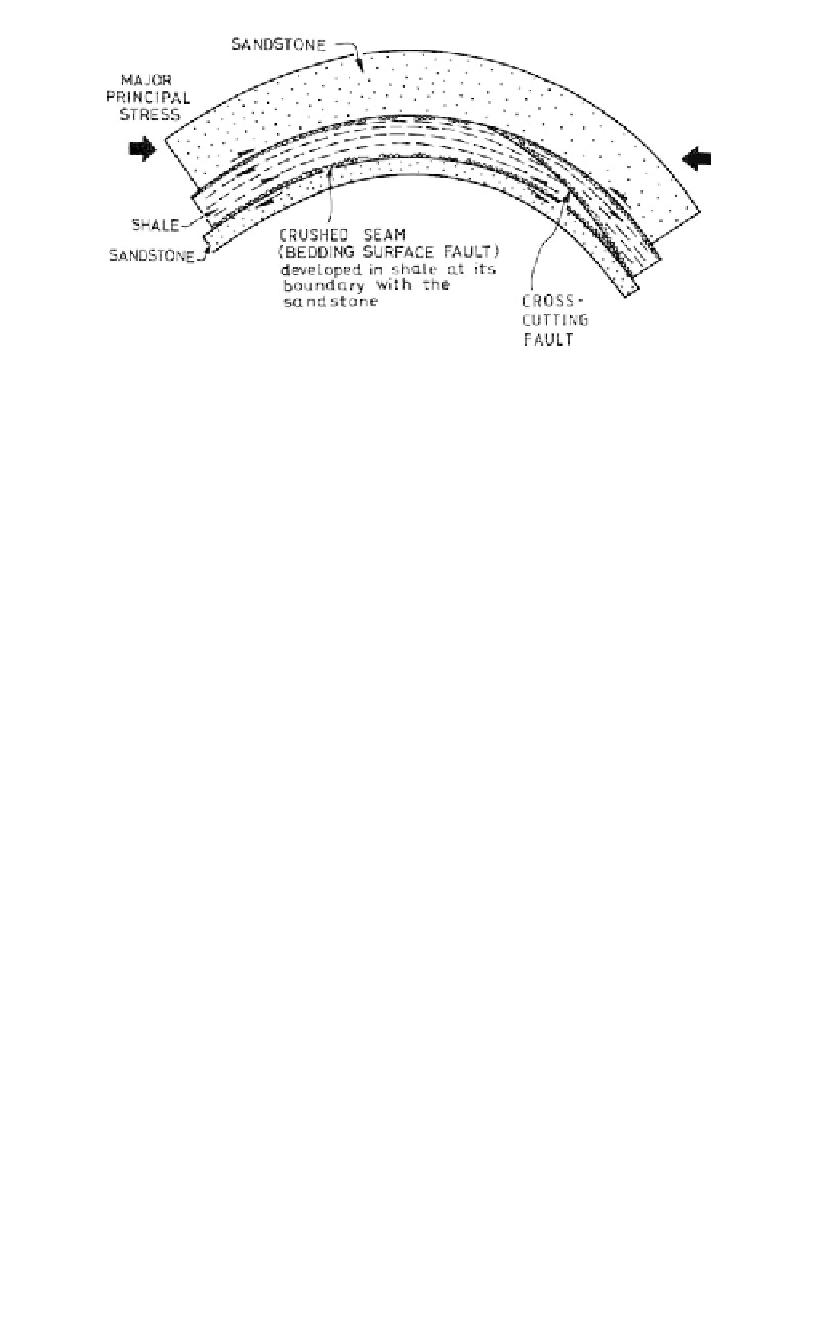Environmental Engineering Reference
In-Depth Information
Figure 3.19.
Usual way in which bedding surface faults are formed in mudrocks.
core rotation causes remoulding of the defect, which is then difficult to distinguish from
remoulded mudrock at a “drilling break” in previously intact core (see
Section 3.5.6
).
The influence of bedding surface faults on the design of several embankment dams is
described by Casinader (1982). Their effects on the design and construction of Sugarloaf
and Thomson Dams are discussed in Chapter 2, Section 2.10.
Maddox et al. (1967) describe their effects at Meadowbanks Dam, a 43 m high massive
buttress dam in Tasmania, founded on interbedded sandstones and mudstones. The dam
was planned originally to be a concrete gravity structure but, during excavation of the
foundation, continuous bedding-surface seams of clayey silt were found within the mud-
stones. Change to the buttress design and installation of prestressed cables were needed to
achieve the required factor of safety against sliding.
3.5.3
Slickensided joints or fissures
Many mudrocks, particularly claystones, contain zones in which the rock contains an irregu-
lar network of curved, intersecting, slickensided joints. These joints are believed to have
originated when the material was still a clay soil and to have developed by any of the fol-
lowing types of process:
- syneresis (Skempton and Northey, 1952; White, 1961);
- shrink and swell movements (Corte and Higashi, 1964);
- differential shear movements during consolidation;
- large lateral stresses (Aitchison, 1953; Terzaghi, 1961).
Due to their lack of continuity and their curved, irregular nature, these joints usually do
not form continuous zones of very low shear strength. However, the shear strength of the
jointed mass is appreciably lower than that of the intact mudrock. In adopting strength
parameters for use in design, the strength of both the intact substance and the joints, and
the spacing, orientation and continuity of the joints, need to be taken into account.
3.5.4
Weathered products and profiles in mudrocks
Weathering of mudrocks usually involves mechanical disintegration as described in
Section 3.5.1 and the removal of cements such as calcite and silica. In the extremely
weathered condition all mudrocks are clays or silts. Intermediate weathered conditions
(e.g. slightly and distinctly) are often difficult to define in the weaker mudrocks, which

